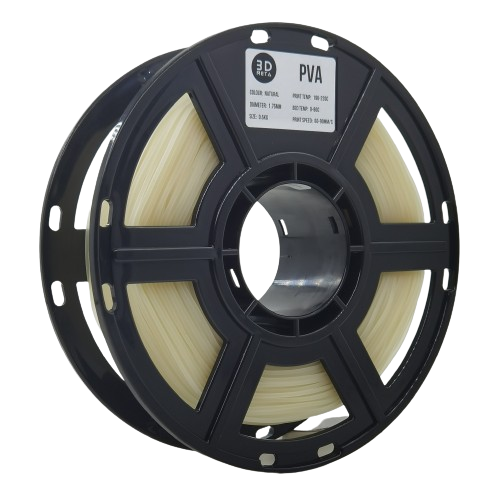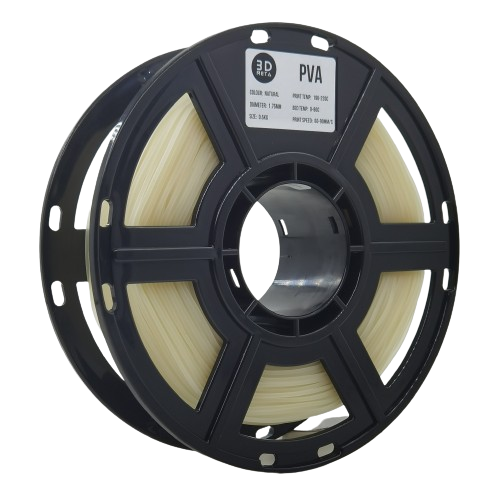Description
PVA 3D Printing Filament:
3D META’s PVA 3D printing filament is an essential support material for complex 3D printing projects. Produced with high-quality, water-soluble polyvinyl alcohol, our PVA printing filament is perfect for creating intricate and detailed prints that require temporary supports. The PVA 3D printing filament dissolves easily in water, making it an ideal choice for dual-extrusion 3D printers when combined with materials like PLA, PETG, or Nylon. This ensures that complex geometries, overhangs, and internal cavities can be printed with ease, leaving behind a clean and precise final product without the hassle of manual support removal.
Key Features of PVA 3D Printing Filament:
- Water-Soluble Support Material: The primary advantage of PVA printing filament is its solubility in water, making it perfect for printing complex parts with intricate support structures that can be easily removed by simply immersing the print in water.
- High Compatibility: Our PVA 3D printing filament is compatible with a wide range of filaments, including PLA, PETG, and other low-temperature materials, enhancing its versatility for multi-material 3D printing.
- Consistent and Reliable Performance: Manufactured under strict quality control standards, 3D META’s PVA printing filament ensures consistent diameter and smooth extrusion, minimizing the risk of print failures and ensuring reliable performance across all your 3D printing projects.
Applications for PVA 3D Printing Filament:
PVA printing filament is predominantly used in multi-material 3D printing as a dissolvable support structure. It is particularly beneficial for creating models with complex geometries, moving parts, or internal channels that would be impossible to achieve with traditional support materials. It is widely used in fields such as prototyping, engineering, and educational purposes, where precision and clean post-processing are crucial.
Storage and Handling of PVA Printing Filament:
Due to its hygroscopic nature, PVA 3D printing filament should be stored in a cool, dry place, preferably in an airtight container with desiccant to prevent moisture absorption, which can adversely affect its printability. If the filament absorbs moisture, it can be dried using a filament dryer or in a low-temperature oven at around 50°C for a few hours.
Why Choose 3D META's PVA 3D Printing Filament?
At 3D META, we prioritize quality and reliability. Our PVA printing filament is meticulously produced to deliver consistent performance, ease of use, and high compatibility with other filaments. Whether you are tackling complex models or simply looking to streamline your 3D printing process, 3D META’s PVA 3D printing filament provides a dependable solution for achieving high-quality, detailed prints every time. With our commitment to innovation and quality, you can print with confidence, knowing that our PVA filament meets the highest standards in the industry.
Print Settings
**Downloadable slicer profiles for 3D META filaments coming soon!**

Technical Specs
Our full technical datasheet can be downloaded here

FAQ's
Q: How do you remove PVA supports from a 3D print?
A: To remove PVA supports, simply immerse the print in water. The PVA dissolves, leaving behind a clean final model. The dissolution process may take several hours depending on the print's size and the water temperature.
Q: Are there any special considerations when using PVA 3D printing filament?
A: Yes, PVA filament is sensitive to moisture, so it’s crucial to keep it dry before and during printing. Also, ensure that your 3D printer is capable of dual-material printing to fully utilize PVA as a support material.
Q: Can PVA 3D printing filament be used for functional parts?
A: While PVA is excellent for support structures, it is not suitable for functional parts due to its solubility and lower mechanical properties compared to other filaments. It is primarily used for creating supports that are later removed.


